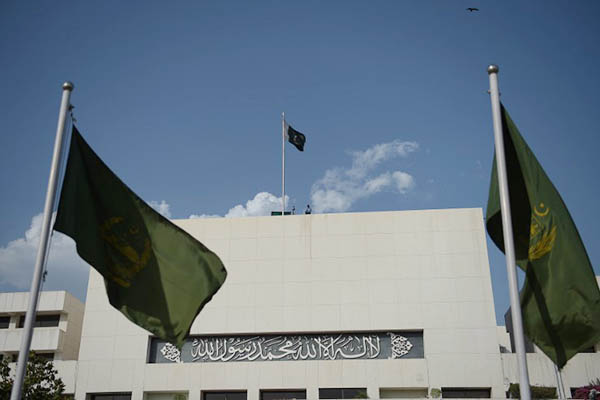
File photo. Aamir Qureshi—AFP
An inadvertent impact of the provincial autonomy granted by the 18th Amendment has been the increasing marginalization of “national” parties to “provincial” ones, with the Pakistan Muslim League (Nawaz) emerging as the most obvious example. The PMLN, per most public opinion surveys, remains popular in Punjab—though challenged by the Pakistan Tehreek-e-Insaf (PTI)—but appears to be fading into obscurity in the rest of the country. Of 266 general seats in the National Assembly, it is not fielding candidates on 51, a majority from Sindh. The Pakistan Peoples Party, similarly, appears “strong” in only Sindh, as evidenced by a recent survey that found 45% of respondents would likely vote for the PMLN; 35% PTI; and just 8% PPP. Even the PTI, despite fielding candidates on nearly every NA seat, has struggled to gain support in Balochistan and interior Sindh. This does not auger well for the federation, as no political party can effectively claim to represent all of Pakistan.
The situation was markedly different in the past, with PPP founder Zulfikar Ali Bhutto once being the most popular politician in Punjab. Perhaps this upsets PPP Chairman Bilawal Bhutto-Zardari, who has been hitting hard the campaign trail in Punjab in a bid to revive his party’s fortunes but struggling to woo back defections to the PTI, with independent observers already declaring it a difficult task. Even nationally, a Gallup Pakistan poll found PTI’s Imran Khan leading with a 57% approval rating, followed by Nawaz Sharif at 52% and Bilawal trailing in third with 35%.
What makes it even harder for “regional” parties to emerge at the center is the need to secure a foothold in Punjab if they wish to form the federal government. The country’s most populous province has 141 of 266 seats in the National Assembly; followed by 61 of Sindh; 45 Khyber-Pakhtunkhwa; 16 Balochistan; and 3 Islamabad. This naturally favors parties like the PMLN and the PTI, enabling them to form a government even if they don’t perform as well in the other provinces.
